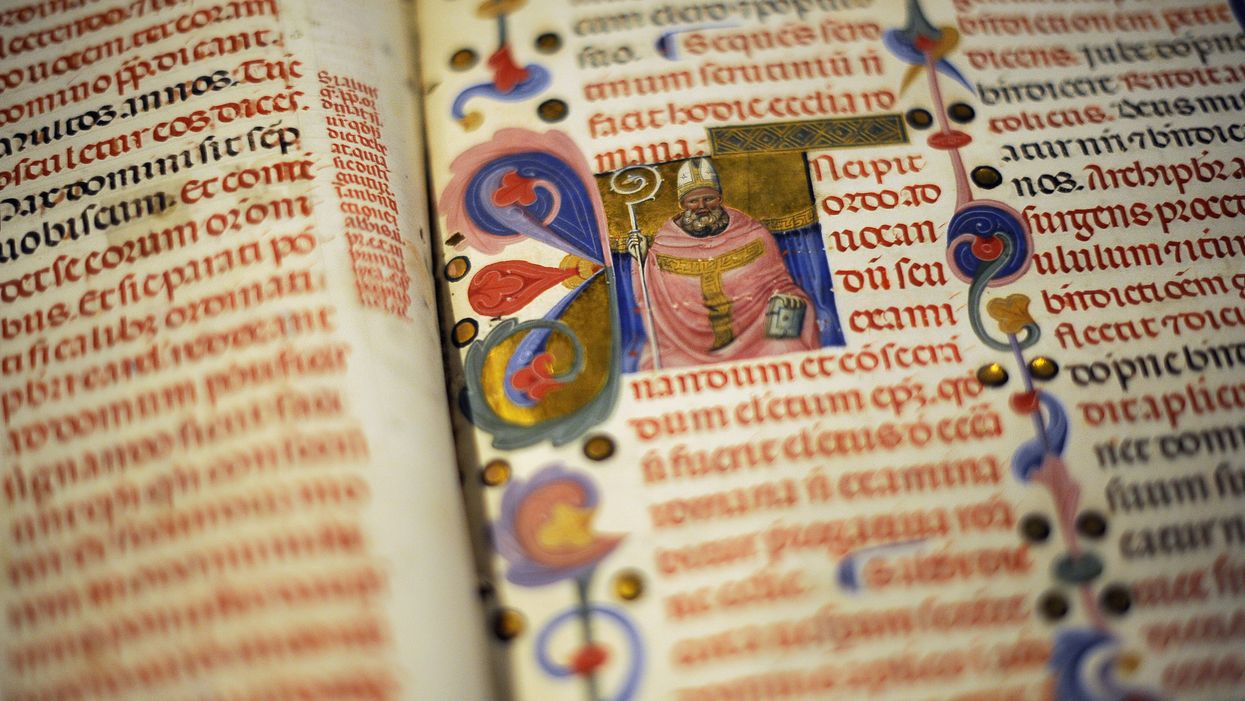
JEFF PACHOUD/AFP/Getty Images

The discovery was made after paint was found in the jawbone of a medieval nun
Scientists say that blue paint flecks embedded in the teeth of a medieval nun prove that she worked as an illustrator for illuminated religious manuscripts.
When analyzing the teeth of a woman who lived in what is now Germany at some point between 997 and 1162AD, researchers found tiny flecks of blue paint embedded in the teeth itself. They determined that the paint had gotten there when the woman had licked her paintbrush, a common practice at the time for illustrators. The paint flecks then became trapped in fossilized plaque known as dental calculus.
The scientists behind the project were able to determine that the paint used was made from lapis lazuli, an expensive pigment at the time that came from Afghanistan. This paint was reserved for decorating religious manuscripts.
Historians already knew that some women during this time period illustrated manuscripts, but they believed that most of them did not sign their names to their work rendering it impossible to tell what they had done. This new find adds a little more to their mostly untold story.
It's also not unheard of for women to have worked as scribes and translators on medieval texts. For example, when St. Jerome was translating the Bible into Latin in the late 4th century, he enlisted the help of a number of women including one named Paula and her daughter Eustochium